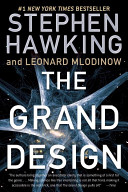What is a "Law of Nature"?
Our modern understanding of the term "law of nature" is an issue philosophers argue at length, and it is a more subde question than one may at first think. For example, the philosopher John W. Carroll compared the statement "All gold spheres are less than a mile in diameter" to a statement like "All uranium-23 spheres are less than a mile in diameter." Our observations of the world tell us that there are no gold spheres larger than a mile wide, and we can be pretty confident there never will be. Still, we have no reason to believe that there couldn't be one, and so the statement is not considered a law. On the other hand, the statement "All uranium-235 spheres are less than a mile in diameter" could be thought of as a law of nature because, according to what we know about nuclear physics, once a sphere of uranium-235 grew to a diameter greater than about six inches, it would demolish itself in a nuclear explosion. Hence we can be sure that suet spheres do not exist. (Nor would it be a good idea to try to make one!) This distinction matters because it illustrates that not all generalizations we observe can be thought of as laws of nature. and that most laws of nature exist as part of a larger, interconnected system of laws.
Notes:
Many laws of nature are conclusions drawn from the larger "interconnected system of laws."
Folksonomies: nature natural law laws law of nature
Taxonomies:
/law, govt and politics (0.759711)
/business and industrial/business operations/business plans (0.402773)
/style and fashion/jewelry (0.262147)
Keywords:
John W. Carroll (0.983179 (neutral:0.000000)), uranium-235 spheres (0.894696 (negative:-0.209078)), suet spheres (0.822635 (neutral:0.000000)), uranium-23 spheres (0.813074 (negative:-0.213533)), gold spheres (0.791299 (neutral:0.000000)), nature (0.658151 (negative:-0.356446)), diameter (0.614055 (negative:-0.211306)), issue philosophers (0.607490 (neutral:0.000000)), modern understanding (0.594632 (positive:0.589669)), subde question (0.592410 (neutral:0.000000)), good idea (0.554789 (neutral:0.000000)), nuclear explosion (0.533671 (negative:-0.404943)), law (0.527489 (negative:-0.344591)), nuclear physics (0.519551 (positive:0.215559)), laws (0.495771 (negative:-0.342496)), statement (0.468499 (negative:-0.344591)), mile (0.467698 (negative:-0.211306)), generalizations (0.223261 (neutral:0.000000)), conclusions (0.222744 (negative:-0.356446)), inches (0.209184 (neutral:0.000000)), distinction (0.203628 (neutral:0.000000)), reason (0.201553 (negative:-0.483735)), length (0.201416 (neutral:0.000000)), think (0.200246 (neutral:0.000000))
Entities:
uranium-235:City (0.894940 (neutral:0.000000)), John W. Carroll:Person (0.665352 (neutral:0.000000)), six inches:Quantity (0.665352 (neutral:0.000000))
Concepts:
Thought (0.977831): dbpedia | freebase | opencyc
Philosophy (0.966905): dbpedia | freebase | opencyc
Mind (0.946197): dbpedia | freebase | opencyc
Cognition (0.935631): dbpedia | freebase | opencyc
Scientific method (0.911758): dbpedia | freebase
Reasoning (0.894997): dbpedia | opencyc
Philosophy of science (0.880524): dbpedia | freebase
Idea (0.850188): dbpedia | freebase | opencyc





